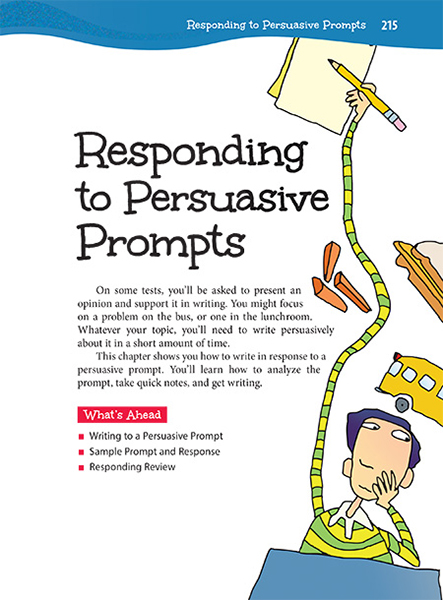Page 215 from

Start-Up Activity
Put this persuasive prompt on the whiteboard:
In a classroom blog post, recommend a sport or other activity to a new student. Give three reasons for your recommendation.
Give students 5 minutes to analyze the prompt, state their opinion about a particular activity, and list their reasons. If your students struggle to complete these tasks, reassure them that this chapter teaches strategies for planning, creating, and improving responses to prompts. The process will help them build confidence going into essay tests and other assessments.
Think About It
“Don’t worry about writing the perfect sentence, or you’ll never get past the first line.”
—Jan Greenberg

Start-Up Activity
Put this persuasive prompt on the whiteboard:
In a classroom blog post, recommend a sport or other activity to a new student. Give three reasons for your recommendation.
Give students 5 minutes to analyze the prompt, state their opinion about a particular activity, and list their reasons. If your students struggle to complete these tasks, reassure them that this chapter teaches strategies for planning, creating, and improving responses to prompts. The process will help them build confidence going into essay tests and other assessments.
Think About It
“Don’t worry about writing the perfect sentence, or you’ll never get past the first line.”
—Jan Greenberg

